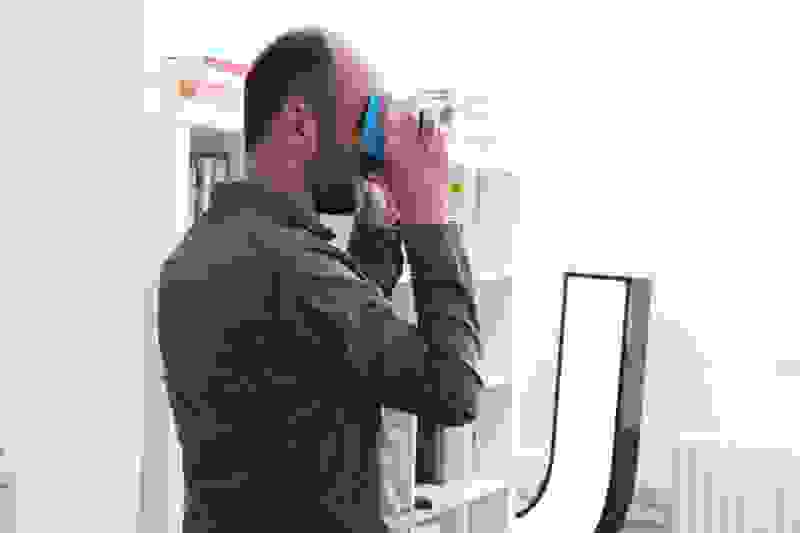Our future in virtual reality

Andrew Baxter using a virtual reality headset
Virtual reality is the hot new thing in technology with the gaming industry jumping in with both feet. And while it is the latest trend, what does that really mean for us as digital designers and developers? Are there potential real-world uses for a technology that is usually associated so closely with gaming?
Let's start at the beginning...
With its origins based on research conducted in the 19th century, virtual reality isn't as new a concept as you may think. Panoramic paintings, stereoscopic photographs and all similar breakthroughs since that time have come from the premise that you can trick the human body using perception and immersion.
The concept of modern virtual reality as we know it comes from, believe it or not, science fiction. A story penned by Staley G Weinbaum in 1935 provided a comprehensive description of what virtual reality would go on to be over 80 years later. It described a pair of goggles that let the person wearing them experience a fictional reality they could interact with.
After some unwieldy attempts at the concept (the arcade game-like Sensorama in the 1960s and the accurately nicknamed "Sword of Damocles" that same decade), the late 1980s not only brought more traditional-looking wearable VR technology from company VPL (including the humorously named, EyePhone), but was also where the "virtual reality" term was born.
From there we saw video game companies start to really get on board with the concept, with The Virtuality Group (arcade machines), Sega (Sega Genesis VR headset) and Nintendo (Virtual Boy) all dabbling in TV technology with mixed results.
It's not until recently, however, with Facebook's purchase of the Oculus Rift in 2014, that we've seen a big push for home-VR technology, being able to put yourself in any location/situation from the comfort of your living room.
Now, VR technology is becoming mainstream enough to really start making waves in not only gaming but also digital design and development.
What does it mean for us?
As digital designers and developers, it's important that we try to make the most of any new technology that comes our way if it can provide a new service to a client.
Whilst there are many web-based VR games out there, there are plenty of other fascinating real-world uses for VR that could help shape many user experiences for years to come.
For example:
- You can use VR to transport your users to places never thought possible before. From being able to, in theory, drop someone on Mars, to letting them enjoy the recent solar eclipse from the comfort of their home. Imagine putting on a headset and being transported to Paris and New York?
- You want to buy some units for the kitchen but you're unsure how they will look, you can use a headset to put yourself in a simulation of what the room could look like.
- Do you want to buy some new clothes? In VR you could have clothes superimposed onto you and see for yourself how they will look.
- You can also use it to teach and train people, putting them into simulations of real life situations in a safe environment.
We are now living in a day and age where opportunities for businesses that, on the face of it, were only possible in science-fiction are now possible.
Whilst this is all incredibly exciting, the question should now be whether this is all necessary. Whilst there is evidence to suggest VR is going to be a new way to consume information, the concept, in its current form, is still a very new one. For that reason, a wait and see approach may be the best route to take.
Though more widely accessible than ever before, there is still not a massive amount of headsets out there, and as a sector, web development may need to wait and see what VR does for gaming to fully understand what it can do for us. It's something to look towards in the future, though, as the potential is there to really develop immersive experiences to clients and customers, the likes of which we never thought possible.
Having said that, Mozilla has very recently added VR support to their browsers, meaning everyone with Firefox should be able to view VR experiences on their desktop computers. The more widely accessible VR becomes to the general public, the more we need to consider its application to the products we build and the experiences that we are looking to create. So maybe we are closer to the future than we thought...